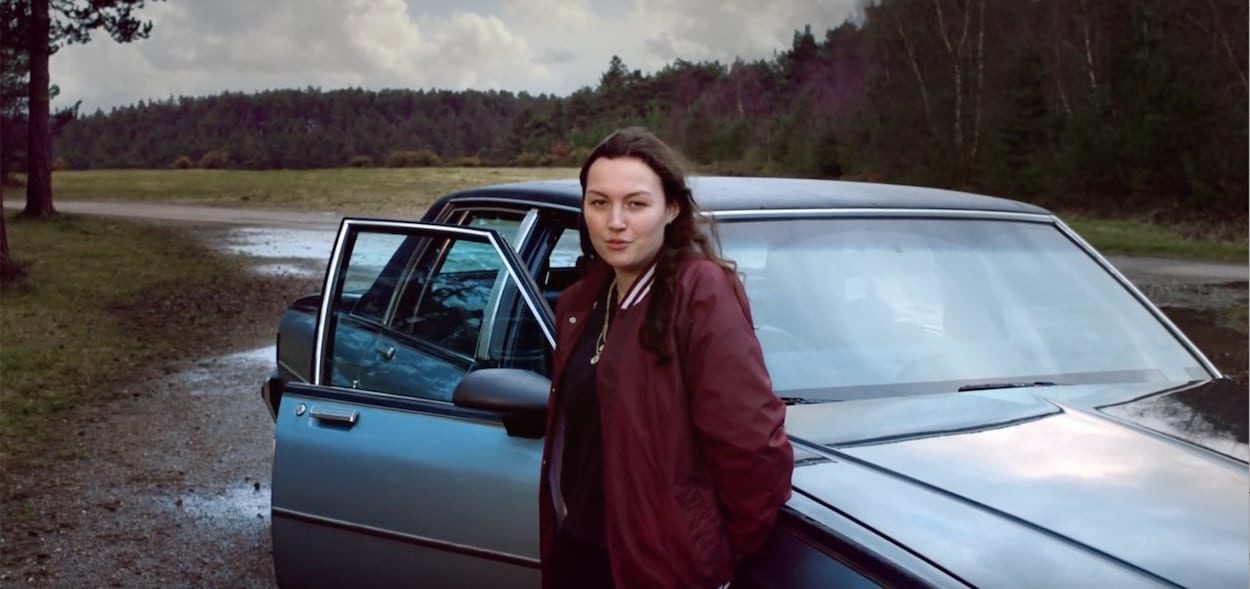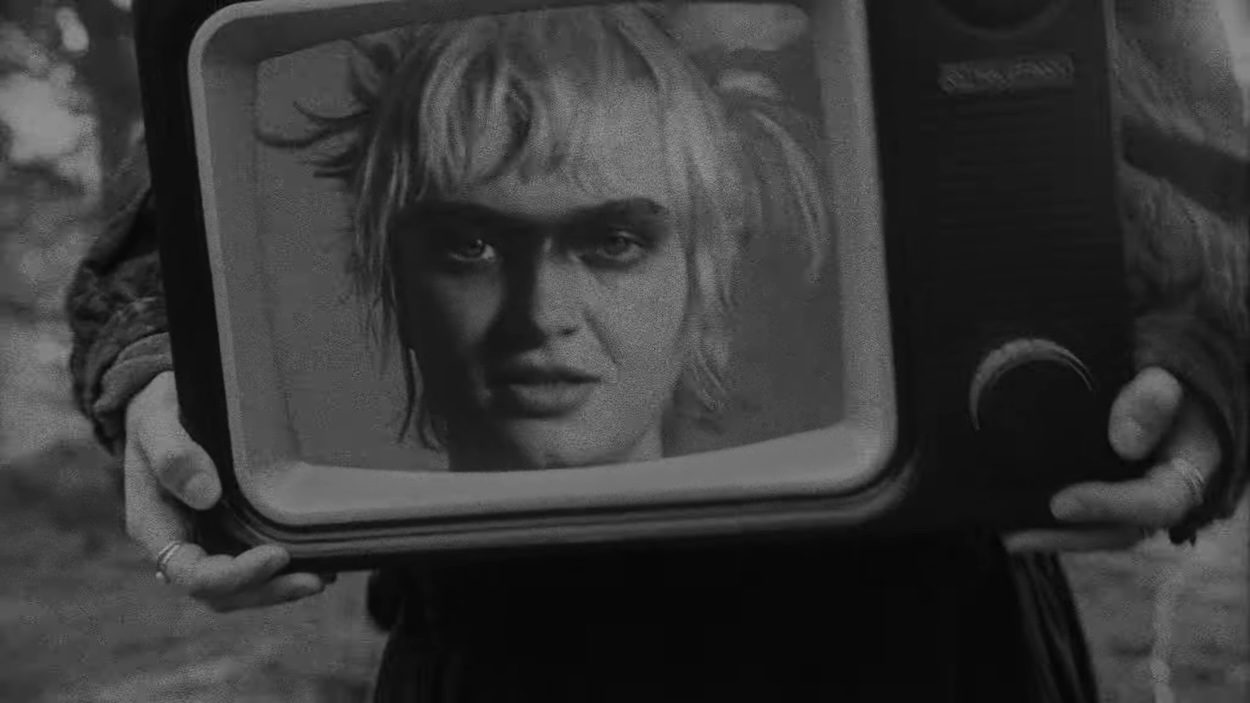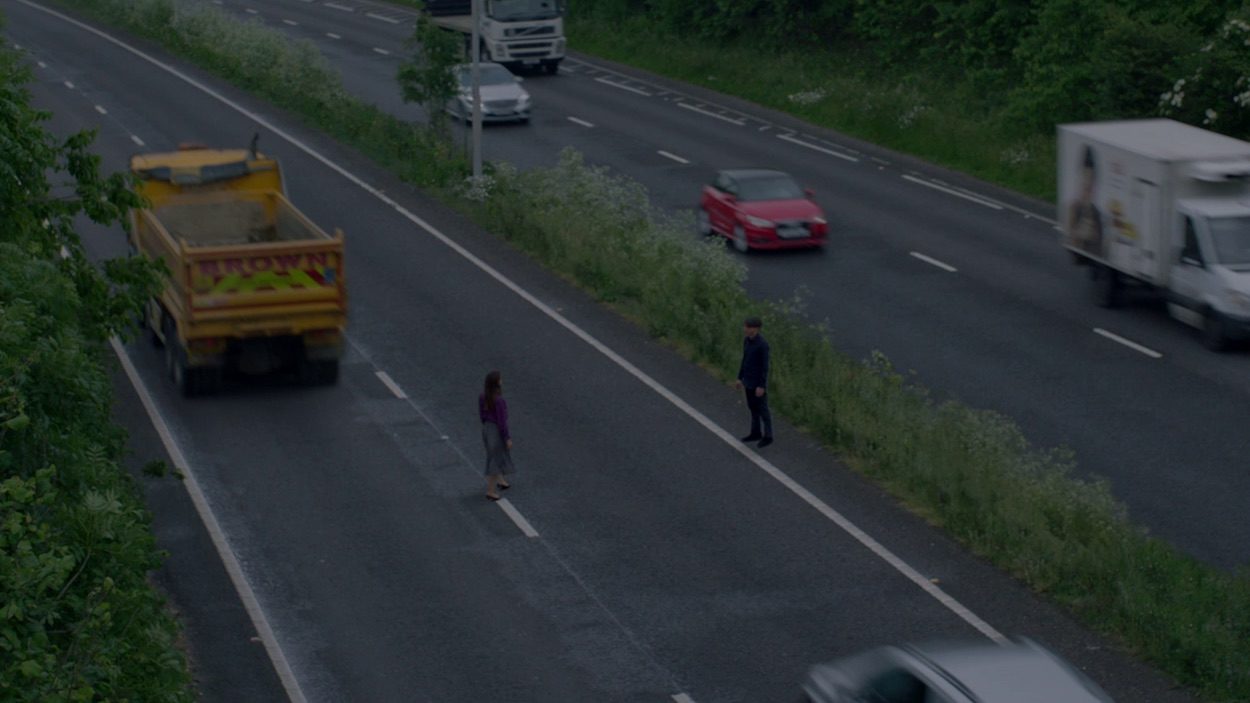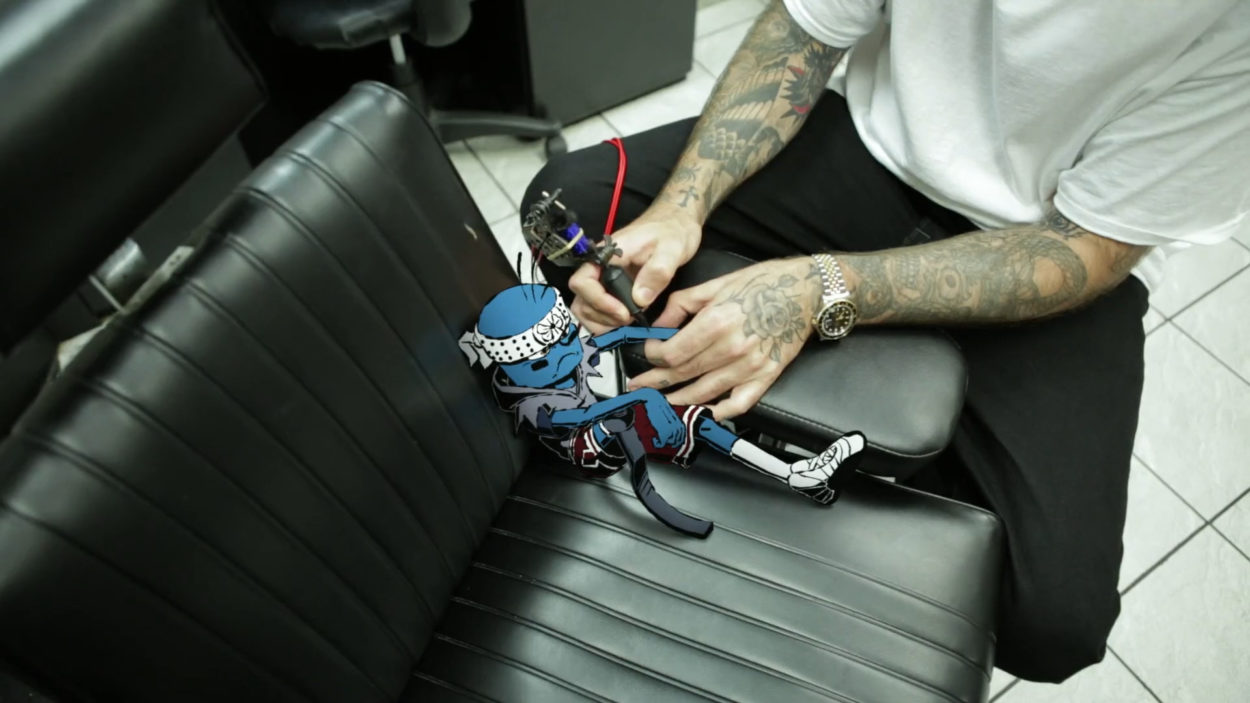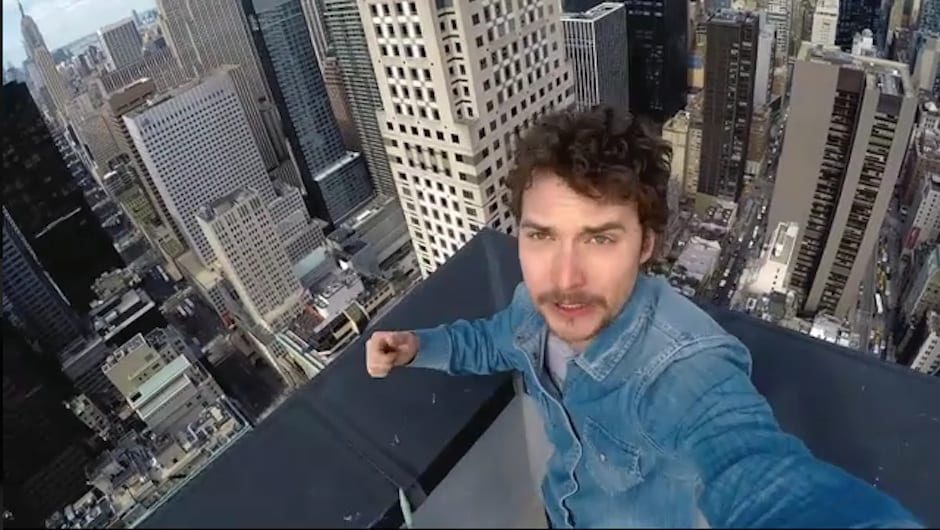-
Q&A WITH THE DIRECTOR AND CREATIVE DIRECTOR ED MORRIS
What triggered your spoken word script – did the rhythm and words just come to you in a continuous flow?
Well, the brief triggered it. The whole thing came in a single moment, it wrote itself so to speak. I recorded myself speaking it on my phone. I sent that recording to the client and they liked it.
While you were writing the script were you simultaneously visualising the simplicity of the one-shot film?
No, I wrote it not having any idea how it would be presented. And then I thought we needed to find a way to deliver it that was fresh and committed to the message, you know, nothing getting in the way. So I started to think of it as a character based thing, one take, etc.
There isn’t one cliché in this film including the lead character rapping (can we call it that?) in such a simple location. What was your criteria for the character and the location and how did you go about finding them?
I was inspired by a photograph I took some time ago. Something that it ended up quite removed from but I remember thinking we had to be very single minded. I stuck to my guns thinking it didn’t have a chance but the clients loved it and got it completely.
Everything came from that initial thought which was all in my treatment. I wanted to portray a character we liked. If we like her we’ll like the ad and the brand. Who was she, what car would she have as a first car, where does she go, what music is she in to? In my treatment I described her as “embodying the spirit of freedom” or something like that.
And of course the main thing was…don’t make it look like an ad. Why do so many advertisers seem to insist on that?
How would you sum up the tone and feel you were after with the lighting and slow track?
Authentic, timeless, thoughtful, unobvious, challenging, intriguing, etc.
You shot the stills for the campaign too, how did you get that quality to them, are they digitally shot and manipulated?
I shoot on a lot of formats. I tend not to manipulate stuff at all. I shot the stills digital and 35mm film. But I used the same lenses on both cameras. We went with the film shots. I printed the film shots and scanned the prints. Then Shamus at The Mill and I used the scanned film prints as reference when grading the film.
Was the whole production a smooth process; any surprises or challenges?
Yes, so smooth, effortless, but then I have a very good producer (Polly du Plessis). The main challenge I find in all these things is getting through the process without loosing any of the spontaneity, creativity or spark.
Is there anything you’d change about the production if you could?
Well yes, there always is. I’d have told Molly the actress not to wash her hair the night after the first days shooting. Other than that not really.
Anything else you’d like to share?
Yes two lines that didn’t get through Clearcast… You want Big’s big bills, keep taking the pills. And… Big’s in a board meeting, Big’s a president tweeting.
-
1.4 IN CONVERSATION WITH GIFFGAFF BRAND DIRECTOR TOM RAINSFORD AND HEAD OF ADVERTISING ABI PEARL WARD
Tom Rainsford: The initial brief basically was talking about freedom and no contracts and not tying people down, but we noticed a thing in culture which is words that have previously meant something positive have now become negative or they’ve been negative and now they’re positive.
1.4: Like, say, “Sick”?
Tom: Yeah. Like Sick where we were talking about even like the re-definition of feminism as a word or Youth Quake which was originally from the 60s about people wearing mini-skirts and now it’s used in a much more positive way around the power of youth and there’s all these things going on. There’s lots of things in culture that are being re-defined, gender roles, size, people’s weight and sizes, religious views, race, religion –
1.4: Class.
Tom: Class. Big weighty things that people are questioning now more than ever and we love that. We love the whole question thing, we love people saying, well just because things have always been done that way, why should we do it that way? Actually there’s a better way to do things and lots of people are very scared of that, right? I’m happy that people are scared of it because we have to change things. Our approach to the environment has to change, our approach to politics has to change, right?
And then, Donald Trump tweeted about him having a bigger button than North Korea and we immediately put this into the brief because it was such a great example of everything that’s wrong historically with trying to look backwards at my dog’s bigger than your dog, my country’s better than your country, my football team’s better than your football team, blah, blah, blah. We were just like wow, that’s such a great example of what’s wrong about the world but there’s lots of people trying to do things differently. So I guess we then had the brief.
Abi Pearl Ward: There’s this really beautiful thing that happens when you’re in a really crowded market, you can do nothing but be yourself. We’ve always spoken about giffgaff being a David amongst Goliaths, so Tom’s point about redefining things, the idea that ‘big’ was better felt like something we could challenge.
It brings to mind those kids in Florida who had the shooting, they’re a small group of kids who are maybe 18, who are possibly getting the gun laws in America changed so this definition of big being brilliant and wonderful and all-powerful is changing, the small guys are the people who are winning now and they’re getting listened to and they’re the cool guys, they’re the people you want to be following.
Two giffgaff creatives wrote out different phrases which were like, small is this, big is this, small is this, big is this..
We were onto something but I don’t think we quite knew what, and then Tracy (Stokes) from Like-minded Individuals, who’s been our producer since forever basically knew Ed Morris was incredible with writing script and we looked at his earlier Double Life for Playstation work – everything he writes and everything he shoots draws you in and when you’re going to redefine the word small versus big you want someone who can really feel it.
Literally, I think over a weekend on a Sunday Ed, had just come back from being away, he wrote this beautiful bit of prose and recorded it on his phone and sent it to us.
We were kind of like oh my god, there’s something in it… you know when you get a bit excited and something feels like it’s coming together? It felt as though it had this lovely momentum and then literally we spent several weeks crafting it then shooting it.
We’d spent hardly any time with Ed, we literally had a conference call with him, he did this little treatment and by the Tuesday we were working with him.
1.4: The film is very uncluttered.
Tom: It’s super simple. When you’re trying to talk about the difference between small and big, positive and negative, then you don’t want a massive slamming ad. It would be confusing.
Abi: When you look back at what we did, it’s an easy idea to get wrong. It seems easy to us too, but it really wasn’t – the subtlety and the ease with what Ed’s created is why. Ed talks a lot about feeling, he’s got this incredible eye and beautiful way of seeing the world where everything’s all got a place but it’s all got to feel like it’s not been put there. He was meticulous with the casting – the girl, Molly, she’s 18, and she’s only just auditioning for drama school now. She oozes this natural confidence and she’s very effortless, and everything was all about feeling effortless, nothing could be over produced.
Because he’s creative director, he can understand things from our perspective as a client and that there are certain things that we’d like to communicate about our brand, but saying that, he hears everybody’s voice but makes sure that his point of view still comes across. So you’ve still got that integrity and I think it’s such an art form to be able to balance that view and still be heard and still lead.
1.4: So it was a really tight team – just you guys, your own creative department, and production…
Abi: We don’t always agree, but you can have a debate because you’re debating with four people in a room rather than debating with this client who’s going to turn to this client or this creator/director and these creators. It’s just simpler.
1.4: And so you’re entirely accountable for the work that you do?
Tom: We have worked with agencies, we’re neither for or against them, but ultimately, the reason that we have the model that we have is because we believe that we should be ultimately accountable for the creative output of our brand. It’s our brand, no one should know it better than us. You can’t outsource accountability for creativity of your brand. And divorce yourself from that process other than approvals and whip meetings and PPMs. This is nonsense. So we believe that we should have an active, creative input into our brand with the right people at the right time to suit that brief.
Abi: Even with this campaign, any opportunity you’ve got to connect with people which is really hard because with a network brand, you get a SIM card from us, you put it in the phone, you don’t see giffgaff…
Tom: Or drink it or –
Abi: Yeah, every bit of our personality that we share whether that’s in an ad or it’s in a social post or a tweet that we do on a Saturday night on The Voice, everything has to feel like giffgaff. Again, going back to Ed’s feeling thing, working with somebody who understands how things make you feel is so important because you’re not going to get to meet a giffgaff person in a shop or meet a giffgaff person on the end of a phone line; everything is all online.
1.4: So everything you do has to be so authentic?
Abi: Absolutely. We take it really, really seriously. We are really hard on ourselves. We’ve got a tiny team who work so hard and it’s no mean feat what we deliver with the amount of people that we have, the budgets that we have. It really is amazing. You look back and you’re proud and then you’re off to do something else.
1.4: What is the background soundtrack?
Tom: Siouxsie and the Banshees’ Hong Kong Garden.
We talked about music a lot. When I say a lot, I mean a lot. But we all really liked the idea of having a track that was strong, but without overpowering what you’re saying.
Abi: Even when that song came out in 1978, you know that feeling that there’s a change in not necessarily turbulent times, but things are shifting. The norms are shifting. And it feels like we’re sort of in that world again. Things that people tolerated, we’re not tolerating anymore. People’s positions are changing in society and that’s really exciting for a challenger brand like us.
-
THE SCRIPT:
Big’s a bigwig in a big leather chair and a big gig.
Small sits on a stall, Small’s nobody’s fool. Big trips over Small.
Big’s an opinion, Small is a hunch.
Big’s a corporate lunch. Small has a sandwich.
Small saves, Small raves.
After Big’s fleet and greet and he’s back in a board meeting.
Small holds your hand. Small’s your biggest fan. Small’s in the band.
Big talks big talk. Someone could take a walk.
Small whispers, Small listens. Says thank you, says please.
While Big’s bigging it up like the big cheese.
Small’s light on its feet. Small knows the street.
Small’s where it’s at. Small’s got your back.
Big’s all swamping, all routine.
Big’s all wafer and no ice cream.
Small stands by, Small waves hi.
Big says, “Stop! You cannot go. The computer says ‘No.'”
Small smiles. Says, “Hey, come out and play. Stay. ‘Cause you wanna stay.”
